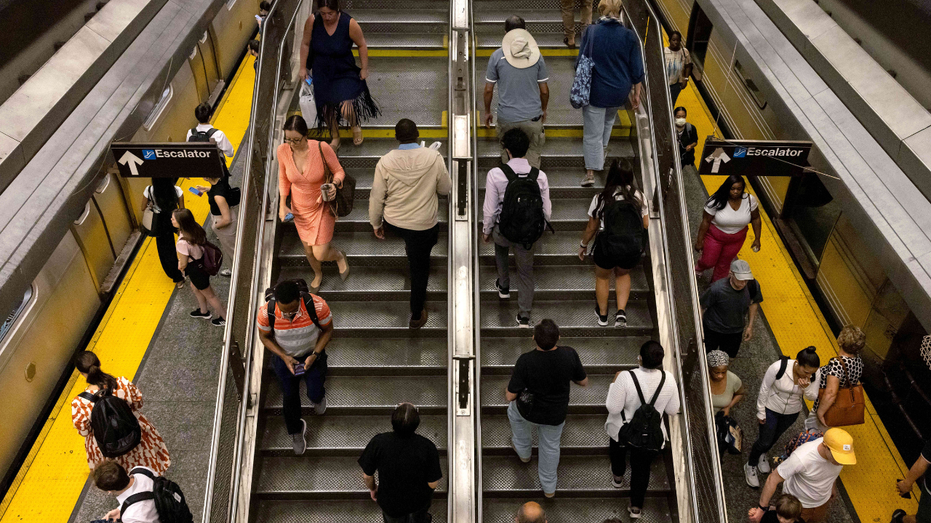The Department of Transportation (DOT) is halting funding for two of New York City’s biggest infrastructure projects — the Hudson Tunnel and the Second Avenue Subway — freezing nearly $18 billion in federal money.
Vice President JD Vance, pressed on the impact of funding cuts to New York City, defended Republicans’ approach to the shutdown.
“We want to do everything that we can to help the American people. But when the Democrats shut down the government, we have to actually do a little triage to make sure the most critical and most essential services are provided,” Vance told reporters at the White House.
A source familiar with the matter, speaking on background to Fox News Digital, said the DOT will release more details but confirmed the suspension is tied to the shutdown, which has forced key staff to be furloughed and stalled reimbursements to contractors.
SHUTDOWN FIGHT CASTS A SHADOW OVER JOBS AS TRUMP PREPARES FOR LARGEST FEDERAL RESIGNATION IN US HISTORY
Additionally, the source said the Trump administration plans to scrutinize whether the multibillion-dollar contracts tied to New York’s massive transit expansion projects were influenced by diversity, equity and inclusion (DEI) initiatives.
The source added, though, that the process for reviewing those contracts has also been frozen amid the funding lapse.
The halted funding threatens to delay progress on the Hudson Tunnel, a critical component designed to modernize rail infrastructure between New York and New Jersey, as well as the long-awaited extension of the Second Avenue Subway in Manhattan.
New York City’s transit system is widely considered the lifeblood of the city, with the subway alone carrying more than 3 million riders per weekday. It serves as the backbone of its economy, shaping commutes, neighborhoods and daily life.
PARTISAN STANDOFF THREATENS CRUCIAL ECONOMIC DATA, LEAVING FED — AND FAMILIES — IN THE DARK
In a statement, the DOT said it notified New York officials that both projects are under review to “determine whether any unconstitutional practices are occurring.”
The DOT also said in its statement that it was focusing on these projects in New York “because they are arguably the largest infrastructure initiatives in the Western Hemisphere, and the American people want to see them completed quickly and efficiently.”

“Thanks to the Chuck Schumer and Hakeem Jeffries shutdown, however, USDOT’s review of New York’s unconstitutional practices will take more time,” DOT said, referring to the Senate’s minority leader and House minority leader, who are both Democrats from New York City.
The DOT described the delay as another casualty of “Democrats’ reckless decision to hold the federal government hostage to give illegal immigrants benefits.”
In a joint statement, Schumer and Jeffries accused Trump of “treating working people as collateral damage.”
“The Gateway Tunnel and Second Avenue Subway aren’t political trophies — they are lifelines. They mean tens of thousands of good-paying union jobs. They mean shorter commutes, safer travel, and a stronger economy not just for New York, but for the entire nation,” the New York Democrats said.
“Instead of playing politics with the livelihoods of millions, President Trump should be working on bipartisan solutions to strengthen infrastructure, lower costs, and deliver for the American people,” they emphasized.
The Gateway Development Commission (GDC) confirmed in a statement to Fox News Digital that it has received notification on the pause in disbursements for the Hudson Tunnel Project.
“GDC complies with all federal laws and regulations and will continue to do so throughout the project. We look forward to continuing our productive relationship with the Administration, FTA, FRA, and the US Department of Transportation,” Thomas Prendergast, CEO of GDC, said in a statement.
“In the meantime, we remain focused on keeping the project on scope, schedule and budget.”
The Second Avenue Subway for Manhattan’s Upper East Side has a long and troubled history. The project was first floated in 1929 and then stalled for decades amid the Great Depression and other economic crises.
A short tunnel was dug in the 1970s between 110th and 120th streets, but construction was abandoned when the city ran out of money. Construction picked back up in 2007 with the project’s first phase, extending service to East 96th Street.
The second leg of the project is expected to bring three new subway stations north of 96th Street, ultimately extending transit service into East Harlem. The new train lines are expected to give more than 100,000 residents more convenient subway service.
